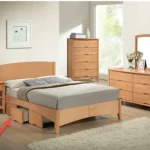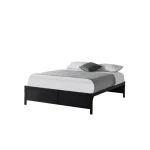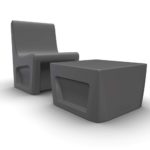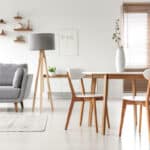Consider Biophilic Design to Inspire Today’s Modern Campers

One noticeable attribute of Generation Z—those born between 1995 and 2015—is how much time they spend with their beloved digital devices. Because of this tech-heavy lifestyle, concerned parents are increasingly looking to overnight camps as a way to balance their kids’ life experiences.
Professional camp directors strive to offer well-rounded activities for health, learning and personal growth. And your site’s design strategy must be part of the big picture for today’s modern kids.
As an emerging trend, many designers are embracing the concept of biophilic design for interior spaces. Biophilic design aims to introduce nature into manmade environments as a way to reduce stress, enhance creativity and improve general well-being.
Essentially, it’s a strategy that taps into the inherent human affinity for the natural world.
Colors and patterns of living things can be replicated indoors, for example, while natural light can be optimized with large windows or skylights. Sounds and textures related to the outdoors can offer familiar comfort while subtly enhancing the overall design theme.
Consider our Habitat traditional woven fabric for your seating groups with its leaf pattern and earthy color choices, such as Herb, Sunshine or Shadow. It’s also a heavy duty fabric that will stand up to round-the-clock use. A perfect choice for biophilic camp design
Provide more nature and less screen time
There’s plenty of debate over whether smartphone or video game “addiction” is a diagnosable disorder. The American Psychiatric Association has only gone so far as to recommended further research on the matter. But many parents believe their kids need active interventions to teach them how to put down those silly controllers!
Here’s where camps have the ideal opportunity to pry digital devices out of the hands of Gen Z. By offering kids the alternatives of outdoor activities, in-person social interaction and peaceful quiet time, camps can emphasize physical, mental and emotional health.
Biophilic design should be part of that comprehensive effort to support the wellness of campers. In other words, a natural-looking indoor environment can allow campers to be immersed in a healthy, screen-free experience 24/7. And be better for it.
Make it feel like home
Whether they disclose it to adults or not, plenty of modern kids are burdened with fear and depression. Most camp directors are well trained to recognize the common occurrences of homesickness and first-day anxiety, but deeper issues can be present.
To reduce stress, biophilic design strategies should be oriented around helping campers overcome fear. One way to do that is to make the camp setting feel homelike. It’s easier for kids to get used to being away when they see consistency and familiarity.
Careful consideration should be given to furniture so it will instantly seem inviting and comfortable, rather than cold or institutional. Coordinating furniture collections reflect order and produce a calming space. When coupled with the nature themes of biophilic design, the atmosphere can make your camp literally feel like a place for a kid to grow.
Consider contract furniture items that are made to last while helping you maximize your space effectively. For example, our TOUGH STUFF Panel Lounge Sofa is made with solid wood construction that holds up to heavy campground use while offering the familiar look of the family room at home. Its high density foam cushions also include a choice of hundreds of fluid-resistant vinyls and fabrics. Match it with a TOUGH STUFF Panel Lounge Chair for a complete seating group.
As you consider the needs of today’s modern kids, keep in mind the power of nature with biophilic design.
Topics: Group Furniture Buying Advice, Crate Style Furniture, Camp & Retreat Furniture, Summer Camp Furniture, Fabric/Upholstered, Wood Crate Furniture, contract fabrics
















